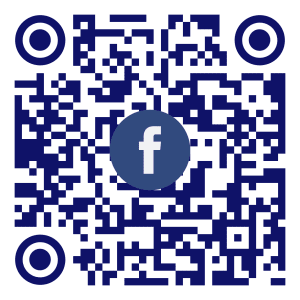Welcome to Open Learning College – Change your career, Increase your salary, and Improve your life.
 Course Overview
Course Overview 
Embark on a transformative learning journey with the UK’s most innovative home study provider, offering courses designed to unlock your true potential and facilitate the career change you desire. Access our distance learning courses directly from anywhere, anytime, and acquire industry-recognised Professional Qualifications essential for advancing in your career.
Specifically, explore the flexible and convenient Emotional Freedom Technique (Level 3) course, an ideal way to gain a diploma qualification. Whether you aim for further education, improved job prospects, or expanded knowledge, this comprehensive course allows you to prepare thoroughly for exams or careers through home study. Plus, it’s structured to be accessible and beneficial even if you have no prior knowledge in Emotional Freedom Technique.
This course is accepted by ACCPH and the Level 3 and allows you to join as a professional member after graduation.
Emotional Freedom Technique is a form of emotional and psychological acupressure, which utilises a simple tapping routine coupled with statements made by the client to express how they feel about the problem in hand. This simple, yet extremely effective meridian therapy is capable of bringing about relief from a variety of physical, emotional and psychological disorders including phobias, addictions, anxiety states and physical pain. It is valuable either as a stand- alone therapy, or as an excellent adjunct to those already qualified in the fields of counselling, psychotherapy and hypnotherapy or coaching.
This course is designed to appeal to those who wish to develop a sound knowledge of EFT, and will provide a basis on which to study other EFT related topics. It will also be suitable for those who have a personal interest in the subject of EFT and how to apply it effectively.
 Course Key Topics
Course Key Topics
the Emotional Freedom Technique (Level 3) course is divided into 10 modules.
Module 1: he Origins of Meridian Therapies and EFT
Emotional Freedom Technique, or EFT as it will be referred to throughout this course, is also called known as Meridian therapy or Thought Field Therapy, TFT. The history of EFT and the theorists who found it is investigated. It utilises a lot of the beliefs from the East which relate to disruptions caused and negative emotions and spirituality on the body’s energy system. This is called the Discovery statement and has had impact on the Physiology and mental health of many. It does not go against or replaces conventional medicine. Why different people are affected by a range of situations and traumas is discussed in terms of the disruption to their energy systems. The use of EFT to address a range of issues e.g. abuse, negative thought patterns, anger, pain, fear, oppression, addiction, grief and depression is explored.
Module 2: The Meridian System in Focus
It is believed that the human energy system flows into specifically divided Meridian lines and these will be explored here. Each meridian is linked to an organ system and how it is structured, located and what it affects and distresses is shown. The main Meridians are the Lung, Large Intestine, Stomach, Spleen, Heart, Small Intestine, Bladder, Kidney, Pericardium, Triple Heater (the only one NOT an organ), Gall Bladder and Liver. There are two EXTRA meridians: the conception and governing vessels. The relation of each to each other and how they impact upon the body are discussed.
Module 3: The full EFT procedure
A step-by-step guide to the procedure used in EFT is shown. An initial consultation will identify the exact and level of disruption of the energy system of the client and how distressing this is on a scale of 1 to 10 on the Subjective Units of Distress or Disturbance Scale, SUDS. The aim is reduce the distress from a high level to a minimal or level 1 where calm and control is felt (the full scale is given). The key point is to encourage the client to state what they feel in their own words. A chant to address the issue or problem and how to locate and begin the tapping on the appropriate meridian line to begin to reach the energy hole is taught. The procedure is repeated and the SUDs scale is re-visited to see if a change has happened. If no change happens then how to address this is taught, but the aim is to reduce the stress level. Only one issue at a time can be addressed through this technique and how to use self-help to sustain the impact and effect of EFT is shown.
Module 4: Understanding Approaches and Aspects
The basis of EFT is to use a Set up Statement which is a statement focusing on the issue or problem, e.g. “Even though I am terrified of Heights, I deeply and completely accept myself.” This is used as a Chant in the EFT approach. If the problem is deep or traumatic, it may be too difficult to voice and ways to resolve this are taught e.g. by breaking up a worry into small chunks, a word or a story. The road to recovery from EFT begins with the client being able to first verbalise the deeply felt issue or problem. Actual examples are used to discuss ways of dealing with a range of reactions and procedures, such as a client being unable to speak about an intense trauma e.g. a child’s death. Tapping to relieve one crisis might then release a range of other aspects and how to resolve these is discussed.
Module 5: he Psychological Reversal, PR.
Dr Callahan contributed Psychological Reversal, PR to explain why some people cannot heal or overcome a certain problem whilst others can, e.g. sticking to a diet or giving up cigarettes or leaving an abusive partner. He helped explain why clients, who wholeheartedly want to change, are unable to, and why they continue to do things that harm or depress them. The causes for this are negative or defeatist thinking, even if in front of others they appear confident. This is referred to as PR and the cause is a reversal of energy flow in the body system. A process called Muscle Testing is used to measure clients who are able to express (or not) these negative issues through a sub-conscientious muscle reflex action. The therapist will then help address the problem that is affecting the client through EFT.
Module 6: Miscellaneous Features of EFT
EFT will have an impact on the whole body when it is being used and signs to show that it is working are detailed, It is well known that the psychological, emotional and the physiological are connected. Body posture and movement are key signs to indicate negative emotions, and clients may start by clenching, folding arms and looking away. They show signs of nervousness and anxiety. As they relax and let go of their worries so they change their posture. As we relax more and more we hear body noises, feel extremely tired and dream-like. It is alright to want to sleep. A range of feelings and effects is explored, so for example well-being and elation. A client may not attribute recovery to EFT, called the Apex Effect, and think they have simply overcome the problem by themselves as the change is so sudden and calm.
Module 7: Using EFT to deal with Specific Problems: Part 1
EFT. assists with phobias, addictions, emotional, and psychological but also almost any physical issues such as headaches, digestive or stomach aches, Insomnia, skin problems and allergies. Often clients may seek medical advice and use EFT alongside conventional treatment. It must not be used to mask pain. Overall health is depended on unimpeded energy flow around the Chi or meridian system. The procedure is identical, so a chant is set up, e.g. “Even though I have a Migraine, I deeply and completely accept myself.” Tapping along appropriate meridian lines is conducted. The holistic belief about disease and illness is that behind every physiological cause, there is an emotional and psychological reason. Particular concerns addressed are Phobias and Addictions.
Module 8: Using EFT to deal with Specific Problems: Part 2
EFT can be used to address anxiety and emotional issues. The range of issues classed together range from panic, to negative feelings, worthlessness to worry and deeper debilitating anxiety. These can then manifest themselves into different physiological symptoms. EFT can be used to install positive emotions by using the same procedure and method. The Validity of Cognition, VOC or how much do we believe it scale is used where 10 represents CALM and 1-3 demonstrates DISTURBANCE and DISTRESS. The method used is EFT chanting and tapping.
Module 9: Dealing with Clients: A treatment from beginning to end
A complete way to set up a session and promote one’s therapeutic method is shown. A complete and step-by-step process from when the client enters to them leaving is given. How to record sessions is explained. The various relaxation techniques, how to consult and assess is shown. The full EFT guide is explained in detail so any difficulties and ways to address these is explored. Key to success is that the client is aware of each phase and that they are full participants in each stage of their session.
Module 10: Promoting your Business: Setting up an E.F.T. practice
Becoming an EFT practitioner can fit into previous counselling work or can be set-up as a new venture and involves a normal business plan. So the usual processes such as locating a niche market, getting an office or place to practice, raising finances and building up a client portfolio is needed. Key to success is being open, honest, effective at using EFT and able to inform others of the service you offer. Where to base the business is important, both in terms of reaching people, but also in terms of providing a peaceful and safe space for clients. Basic provisions such as a waiting area with water, toilets, and treatment room are needed. A set of practical standards, Insurance, being registered with an association and how to charge, invoice, keep confidential records, and market the business is as important as being suitably qualified and able to deliver EFT.
(Please click on the curriculum tab above to see a detailed view of each module)
Course Content
Emotional Freedom Technique (Level 3) – FREE Starter Pack
How to…. (a series of explainer videos)
Module 1 – The Origins of Meridian Therapies and EFT
Module 2 – The Meridian System in Focus
Module 3 – The full EFT procedure
Module 4 – Understanding Approaches and Aspects
Module 5 – The Psychological Reversal, PR.
Module 6 – Miscellaneous Features of EFT
Module 7 – Using EFT to deal with Specific Problems: Part 1
Module 8 – Using EFT to deal with Specific Problems: Part 2
Module 9 – Dealing with Clients: A treatment from beginning to end
Module 10 – Promoting your Business: Setting up an E.F.T. practice
Course Resources
Final Exam
College Announcements
🔍 Unlock the Emotional Freedom Technique Level 3 with £50 OFF the Course! 🌟💰
Ready to delve into the world of Emotional Freedom Technique (EFT) and empower others to release emotional blocks?
For a limited time, seize the opportunity to enrol in our Emotional Freedom Technique Level 3 course with an exclusive £50 discount!
Use code EFT50 at checkout before the month concludes!
🌟 Why Choose Our EFT Level 3 Course
Presented by Open Learning College, this course is your pathway to mastering the art of EFT and facilitating emotional healing. Dive into comprehensive modules covering essential topics—from meridian tapping to addressing trauma. Gain hands-on experience in guiding individuals toward emotional well-being.
💡 What Makes Our Course Shine
Expert Guidance: Benefit from experienced tutors providing support throughout your learning journey.
Real-World Skills: Acquire practical knowledge crucial for success in the field of Emotional Freedom Technique.
Flexible Learning: Tailor your studies to your schedule with 24/7 access to course materials.
Don't miss this chance to unlock the secrets of Emotional Freedom Technique at a discounted rate! Enrol now, use code EFT50* at checkout, and embark on your journey towards becoming a skilled EFT practitioner. 💰🌟
*This discount code cannot be used in conjunction with any other offer.









 Get Social!
Get Social!











Isabella Walker